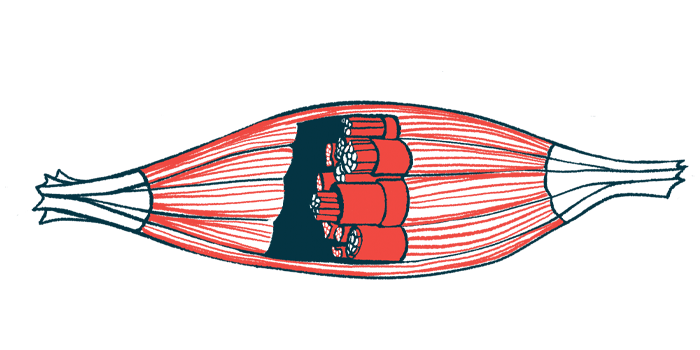Shock wave therapy seen to help motor function in Rett children
Researchers say treatment is 'less painful' than botulinum toxin injections

The use of low-dose extracorporeal shock wave therapy — a safe and noninvasive treatment known as ESWT — for three months was found to improve motor function in children with Rett syndrome.
Reduced muscle stiffness, known as spasticity, also was seen among the children, but the benefits were not statistically significant.
Those were the results of a new study in Taiwan that involved six girls with Rett syndrome among more than 20 children treated with extracorporeal, or outside-the-body shock wave therapy. In such treatment, a device is used to apply high-energy acoustic waves through the skin, with the goal of breaking down tissue and promoting healing and repair.
The researchers’ main goal was to test the effectiveness of the therapy — which has been shown to improve motor function and ease spasticity in cerebral palsy patients — in children with Rett. The team also compared the results with those seen with injections of botulinum toxin, a treatment that blocks nerve signals to muscles, preventing them from contracting. The same toxin is used in the dermatological treatment Botox.
“Being a less invasive, less painful, and more cost-effective therapeutic option than botulinum injection, the utility of ESWT on pediatric population is highly valuable,” the researchers concluded.
The study, “Therapeutic effects of extracorporeal shock wave therapy on patients with spastic cerebral palsy and Rett syndrome: clinical and ultrasonographic findings,” was published in the Orphanet Journal of Rare Diseases.
Shock wave therapy tested in 6 girls in small study in Taiwan
Rett syndrome is chiefly caused by mutations in the MECP2 gene, which provides instructions to produce the MeCP2 protein. This protein regulates the activity of other genes, and plays a vital role in brain development and function.
The symptoms of Rett usually start between 6 and 18 months of life, and include loss of acquired motor skills and speech, repetitive hand movements, breathing problems, and seizures. Spasticity also may occur with disease progression.
Botulinum toxin injection is one of the treatment strategies that’s used for spasticity in people with cerebral palsy — a group of lifelong conditions that affect movement and coordination — but its benefits are usually subtle. Meanwhile, shock wave therapy shown effectiveness in people with cerebral palsy and many other conditions since its first use in 1980.
“However,” the researchers noted, “its application in treating spasticity in Rett syndrome has never been reported.”
To address this knowledge gap, the team analyzed 21 children with spasticity: six with Rett and 15 with cerebral palsy. All of the Rett patients were girls, with a mean age of 14.5. The cerebral palsy patients comprised six boys and nine girls, who had a mean age of 7.8 years.
The participants underwent low-intensity ESWT applied to lower leg muscles under ultrasound guidance. A total of 1,500 pulses were delivered to each leg once weekly, for 12 weeks, or about three months.
Ultrasound also was used to assess muscle thickness and stiffness. No side effects occurred during or after treatment, except for a mild painful sensation.
Therapy found to ease spasticity in cerebral palsy but not Rett
Before the extracorporeal shock wave therapy, the Rett patients had more severe spasticity, evaluated using the Modified Ashworth scale (MAS), than did those with cerebral palsy (4 vs. 2.2). Treatment reduced spasticity in both groups, although the difference was not statistically significant for the Rett patients.
Gross motor function was assessed with the Gross Motor Function Measure-88 (GMFM-88), which analyzes lying and rolling, sitting, crawling and kneeling, standing, and walking/running/jumping. These measures improved significantly in both groups after treatment.
Our study provides evidence that a weekly course of low-dose ESWT for 12 weeks is beneficial for children with [cerebral palsy or] Rett syndrome.
Children with cerebral palsy also showed significant benefits in range of motion of the ankle and in the walking/running/jumping domain of the GMFM-88. These measures did not improve significantly in Rett patients.
“Our study provides evidence that a weekly course of low-dose ESWT for 12 weeks is beneficial for children with [cerebral palsy or] Rett syndrome,” the researchers wrote.
Interestingly, in the gastrocnemius muscle located in the back of the lower leg, wave speed was seen to increase in Rett patients despite 12 weeks of treatment, indicating higher muscle stiffness. The opposite was seen in those with cerebral palsy.
“The diverse therapeutic response to ESWT may be caused by the MECP2 mutation in Rett syndrome, having a continuous impact and driving the [disease processes] differently, as compared to [cerebral palsy],” the scientists wrote.
The low number of Rett patients included and the lack of comparison with conventional therapeutics were among the study limitations pointed out by the researchers.
Still, “the measurement of both clinical and ultrasonographic outcomes after ESWT in children could be a good reference for associated research,” the scientists concluded.







